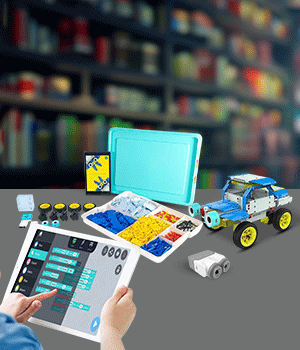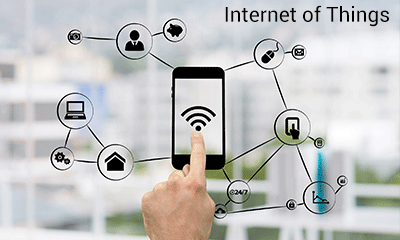

The Future of Augmented Reality (AR) and Virtual Reality (VR)
Revolutionizing the Way We Experience the World

Augmented Reality (AR) and Virtual Reality (VR) have quickly transitioned from futuristic concepts to mainstream technologies, influencing a wide range of industries, from gaming to healthcare, education, retail, and beyond. As two of the most exciting innovations in recent years, both AR and VR are transforming how we interact with the world around us, blurring the lines between the physical and digital realms. In this blog, we'll explore the current state of AR and VR, their most popular applications, and their future trajectories.
What is Augmented Reality (AR)?
At its core, Augmented Reality (AR) is a technology that overlays digital content—such as images, sounds, or information—onto the physical world. Unlike Virtual Reality (VR), which immerses users in a completely virtual environment, AR enhances the real-world experience by adding digital elements to it. AR uses devices like smartphones, tablets, AR glasses, and even smart contact lenses to deliver interactive and immersive experiences.
What is Virtual Reality (VR)?
Virtual Reality (VR) is a fully immersive technology that transports users into a completely virtual environment. Unlike AR, which overlays digital content on the real world, VR creates a separate, entirely digital world that users can explore and interact with. VR typically requires a headset, such as the Oculus Rift, HTC Vive, or PlayStation VR, to deliver an experience that isolates users from their physical surroundings and places them in a simulated world.
Popular AR and VR Applications
AR Gaming: Pokémon GO is one of the most popular examples of AR in gaming. Players explore the real world while interacting with virtual characters, making the physical and digital worlds converge. AR gaming has great potential to blend outdoor exploration with interactive experiences in new and innovative ways.
VR Gaming: On the other hand, VR has revolutionized gaming by providing players with fully immersive experiences. Games like Beat Saber and Half-Life: Alyx allow players to enter entirely new worlds where they can interact with the environment and objects in ways that weren’t possible before. VR gaming is quickly gaining traction as one of the most exciting applications of this technology.
AR in Retail: AR allows customers to virtually try products, like makeup, clothing, and furniture, in their environment before committing to a purchase. IKEA, for instance, uses AR in its app to help users visualize how furniture will look in their homes, reducing the
VR in Retail: VR can take this further by offering fully immersive virtual shopping experiences. Retailers can create VR stores where customers can explore a virtual environment, browse products, and even try them on—all from the comfort of their homes.
AR in Education: In classrooms, AR helps students interact with educational content in a fun and engaging way. AR-powered apps can turn textbooks into interactive 3D models, allowing students to explore complex subjects like anatomy, geography, or history. For example, students can virtually walk through ancient civilizations or interact with 3D models of the human body.
VR in Education: VR has the potential to take education even further by offering immersive, experiential learning. Students can take virtual field trips to historical landmarks, explore the depths of the ocean, or even journey into space, all within the safety of a classroom. VR brings abstract concepts to life, making learning more engaging and memorable.
The Future of AR and VR
AR and VR Wearables : One of the biggest trends in both AR and VR's future is the development of wearables. Companies like Apple, Microsoft, and Facebook (Meta) are working on AR glasses and VR headsets that will make these technologies more accessible, seamless, and portable. These devices will become more lightweight, comfortable, and intuitive, offering users a more natural and immersive experience.
5G and AR/VR Integration : The rollout of 5G networks will be crucial for the future of both AR and VR. With faster speeds and lower latency, 5G will enable smoother and more immersive experiences. This will enhance everything from VR gaming to AR apps, making real-time interaction with virtual elements faster and more seamless.
Immersive Experiences in Entertainment : Both AR and VR will continue to transform entertainment by offering new, fully immersive experiences. Imagine attending a concert where digital effects interact with the live performance or experiencing a movie where you’re not just watching the action—you’re in the middle of it. These immersive experiences will redefine how we consume content.
AR, VR, and the Metaverse : The Metaverse—a collective virtual universe where people can interact with each other and digital environments—is set to become a defining feature of the digital future. Both AR and VR will play a pivotal role in the Metaverse. AR will overlay digital worlds onto the physical, while VR will offer a fully immersive experience, allowing users to navigate and interact with a virtual universe.
Enhanced AI and Machine Learning Integration : The integration of AR and VR with Artificial Intelligence (AI) and Machine Learning (ML) will allow these technologies to become even more personalized and context-aware. For instance, AI could help AR apps recognize objects in real time and provide more intuitive and relevant information to users. In VR, AI could create more adaptive environments, responding to user actions and emotions.
Conclusion
Augmented Reality (AR) and Virtual Reality (VR) are rapidly changing the way we interact with the world, from gaming and education to healthcare and retail. As these technologies continue to evolve, we can expect even more immersive, interactive, and transformative experiences. The future of AR and VR holds exciting possibilities—from more advanced wearables to fully immersive virtual environments—and these technologies will only become more integrated into our everyday lives. Whether through enhancing the shopping experience, revolutionizing remote work, or creating fully immersive entertainment, AR and VR are poised to shape the future of how we live, learn, and play.





